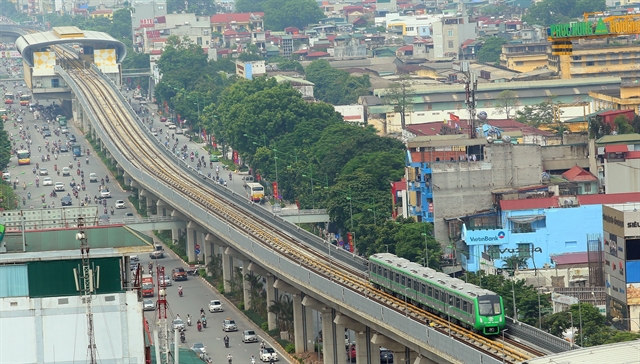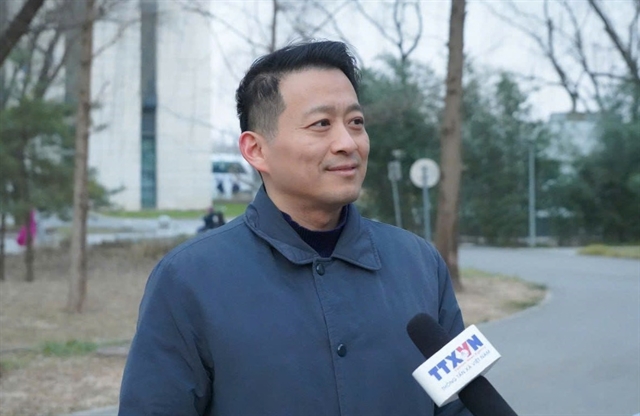 Society
Society


|
| The Cát Linh-Hà Đông urban railway line in Hà Nội. This is the first urban railway project put into operation in Việt Nam. VNA/VNS Photo Huy Hùng |
HÀ NỘI — Hà Nội People’s Committee vice chairman Dương Đức Tuấn emphasised the need to establish a unified standard system for urban railway projects in big cities such as Hà Nội and HCM City.
Speaking at a seminar on the urban railway development on Friday, Tuấn stated that according to Hà Nội’s transportation planning, the capital city would have ten metro lines with a total length of 417.8km, including 75.6km underground by 2030.
In HCM City, eight cross-city and belt routes would be built to link the main centres of the city with a total length of about 172.6km; and three ground-level monorail lines spanning 56.5km.
However, these projects in both cities were way behind schedule.
In Hà Nội, only 13km-long Cát Linh – Hà Đông urban railway line had been put into operation, accounting for 10.4 per cent of the total planned investment length of the network.
One of the causes of the delay, according to Tuấn, is the lack of uniformity and consistency in standards and technical regulations.
He pointed out that each project using technologies from different countries applied different standard systems, leading to challenges in project management.
Dr Phan Hữu Duy Quốc, a member of the Advisory Council for the Development of Urban Railways in HCM City, said it was vital to establish a unified standard framework for urban railways to effectively implement the Politburo’s Conclusion No 49 on the development of Việt Nam's railway transportation by 2030, with a vision to 2045.
Highlighting the differences in standards currently applied to Việt Nam's urban railway lines, Quốc pointed out that this led to resource wastage and ineffective use of equipment and technical products such as drawings, calculations and construction experience.
There was a lack of uniformity in operation and exploitation, difficulties in connecting designed railway lines, and operation according to different technical standards. Additionally, it posed challenges for inspection and appraisal work because each standard would require different understanding and experience, creating unhealthy competition and sometimes bias towards companies in countries setting the standards, he explained.
However, Quốc mentioned that developing a standard system would require a significant amount of time and cost. Therefore, to meet the future development needs of the urban railway system, he suggested applying existing technical standard systems with local specific conditions such as load capacity and the environment.
According to Quốc, the criteria for selecting these standards have been applied and verified through many projects worldwide, making it easy to access information and documents, and promoting healthy competition among entities involved in design, consulting, and construction work.
Yu Tao, chief engineer of China Railway Construction Corporation shared that as a closely interconnected network, the urban railway system would require a unified standard system to ensure smooth operations.
Based on the research of completed and ongoing urban railway projects in Hà Nội and HCM City, he suggested Việt Nam establish a unified regulatory system to ensure compatibility and interaction capabilities among urban railway lines.
Yu Tao stressed that establishing a unified standard system could promote innovation and development in Việt Nam's railway transportation, attracting additional investment and technical support, fostering technological innovation, and upgrading the industry to enhance international competitiveness.
Professor Nguyễn Thị Hoài An from the Faculty of Railway Economics under the University of Transport and Communications, agreed with the establishment of a standardised system for regulations and technical standards for urban railway lines in Việt Nam.
Based on it, the selected technology for urban railways in Việt Nam could be identified. In addition, standardising new construction processes and transitioning standards, prioritising and categorising them according to their importance and necessity, would be crucial for developing standards that meet the requirements when implementing future urban railway projects, she said. — VNS




.jpg)